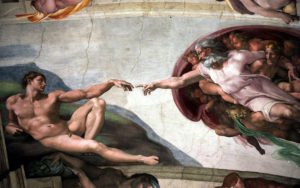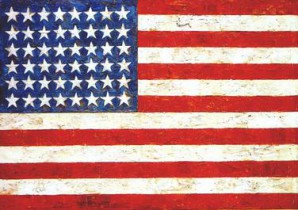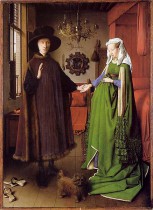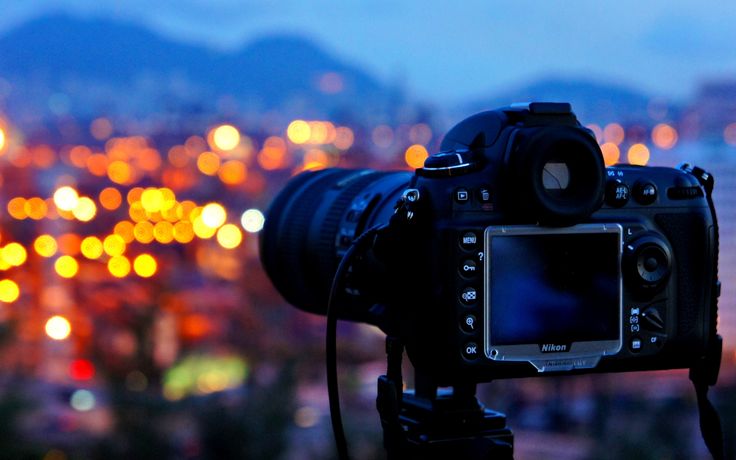Cave Paintings Chauvet France: 30,000BC Prehistoric painters used naturally occurring pigments of red iron oxide, carbon black, and calcite white mixed with spit or animal fat to create elaborate depictions on cave walls across Europe. Historians hypothesize that paint was applied with brushing, smearing, dabbing, and spraying techniques. Twigs, feathers, and even horse-hair brushes were used for paint application. By spraying paint through hollow bones, they were able to create a fine even mist of paint similar to an airbrush.
Early Greeks, Romans, and Egyptians
Fresco: 1800BC-1600AD Buon or “true” fresco is when artists use pure pigments and water to paint on wet plaster. The painting literally becomes part of the plaster wall or ceiling. First, several layers of plaster are applied to the wall or ceiling in preparation fro the final paint layer. Because plaster dries quickly, the artist must work on a buon fresco in small sections and very carefully because once it cannot be changed once it is dry. A fresco secco involves the artist to paint on top of the dry plaster using egg, oil, or glue to bind the pigments to the dry plaster. A fresco secco allows the artist to take his time and easily fix errors, but it is less durable than a buon fresco. Because fresco is essentially part of the wall, it cannot be moved and is often damaged due to the settling and cracking that occurs to plaster over time.
Encaustic: 500BC Encaustic is a beeswax based paint that is kept molten on a heated palette. Because of the time complication with heating and cooling of the wax, encaustic is a very difficult technique to master. However because the beeswax is impervious to moisture, it will not deteriorate, yellow or darken over time. The ancient Egyptian and Romans often used it in the “mummy portraits” of the deceased. Encaustic is very versatile. It can be both moth matt and polished to a high gloss, it can be modeled, sculpted, textured, and combined with collage materials. It cools immediately, so that there is no drying time, yet it can always be reworked.
Tempera: 400AD also known as egg tempera, is a permanent, fast-drying painting medium consisting of colored pigments mixed with egg yolk. It is normally applied in thin, semi-opaque or transparent layers. Tempera painting was the painting method of choice until the invention of oil painting in 1400. Although it does allow for great precision it is nearly impossible to blend requiring numerous small brush strokes applied in a cross hatching technique. When dry, it produces a smooth matte finish. Because it cannot be applied in thick layers as oil paints can, tempera paintings rarely have the deep color saturation that oil paintings can achieve.
Oil: 1410AD Oil painting is essentially pigment suspended in oil (linseed, poppy-seed or walnut). Although one of many to experiment with oil paint, Jan Van Eyck is often credited as one of the first to utilize a technique of oil painting that is used today. With its slow drying time and ability to be applied both opaque and in transparent layers, it allowed artists to achieve deeper richer colors and more lifelike textures and details than ever before. Beginning in Holland in the 1400s, oil paint quickly replaced tempera painting as the medium of choice across most of Europe. It remains the paint of choice for artists desiring the highest degree of illusion.
Acrylic Paint: 1940 Acrylic is a fast-drying paint containing pigment suspended in acrylic polymer emulsion (plastic) and is one of the wonders of the modern age. Acrylic paints are water-soluble, but become water-resistant when dry. They are non toxic and can be painted on a wide range of surfaces both flexible and rigid. They can be modified with water, gels, or pastes to create heavy impasto or an effect similar to transparent watercolor. Unmodified they are very good at creating large swatches of opaque paint with hard sharp edges. The Pop Artists of the 60’s and 70’s in America exploited this effect to create imagery that is almost machine line in its precision.


















